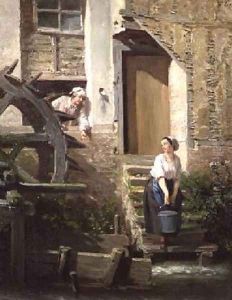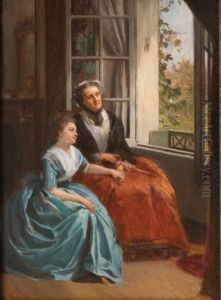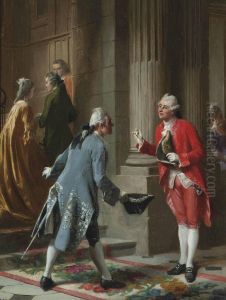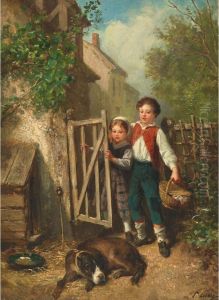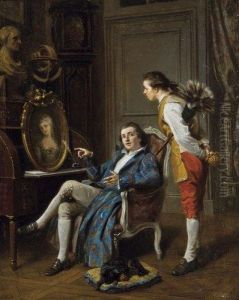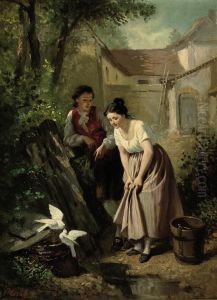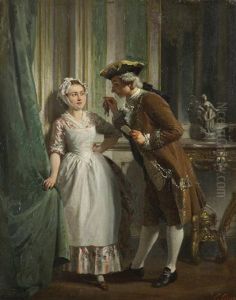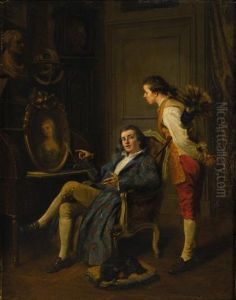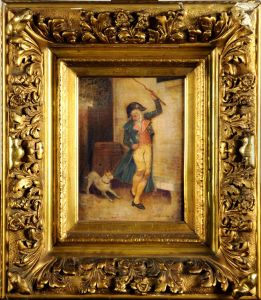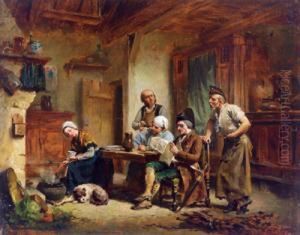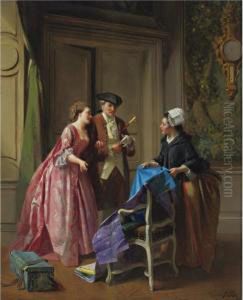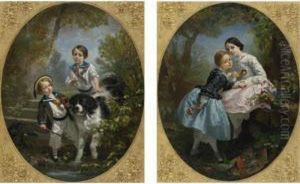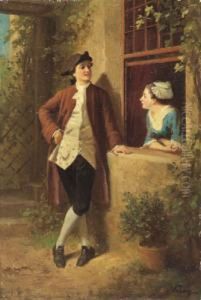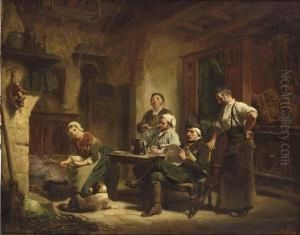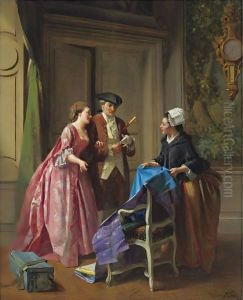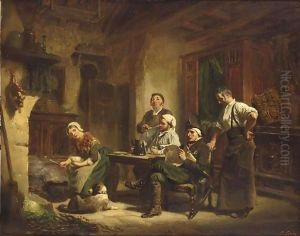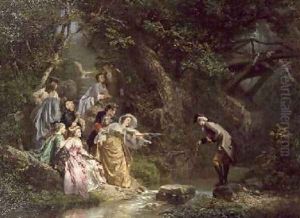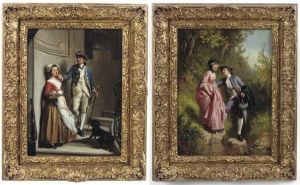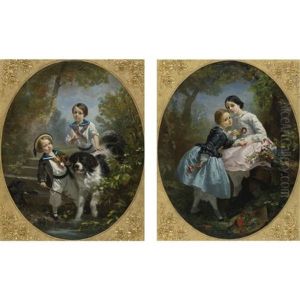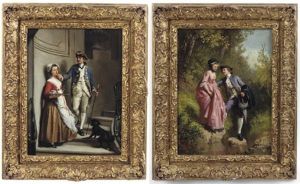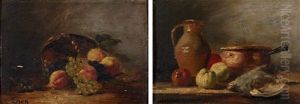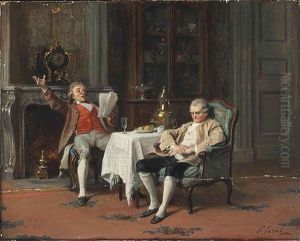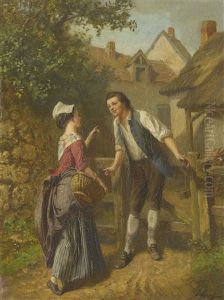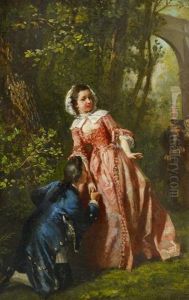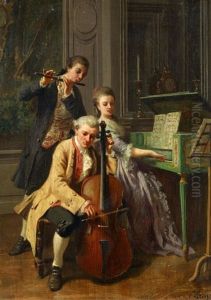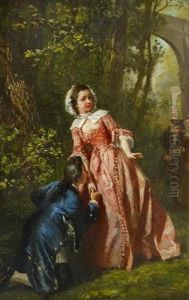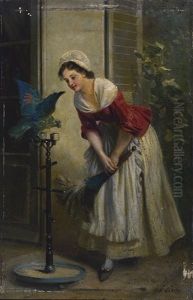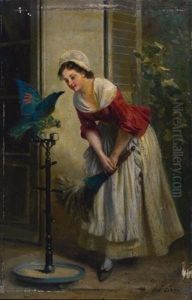Prudent Louis Leray Paintings
Prudent Louis Leray was a 19th-century French artist known for his painting and lithography. Born on September 14, 1820, in Tours, France, Leray developed an interest in art at an early age. He studied under various artists, including the prominent French painter Paul Delaroche. Leray's training under Delaroche helped him master the neoclassical style of painting, which was characterized by its clarity of form, sober colors, and classical subject matters.
Leray's artistic career flourished in the mid-19th century, a period marked by significant political and cultural shifts in France. His works often reflected the romanticism of the time, focusing on historical and mythological themes. Leray was a regular participant in the Paris Salon, the official art exhibition of the Académie des Beaux-Arts in Paris, which was the greatest annual or biannual art event in the Western world at the time.
Despite his participation in these prestigious exhibitions, Leray did not achieve the same level of fame as some of his contemporaries. Nevertheless, his contributions to French art during the 19th century were notable. His lithographs, in particular, gained recognition for their quality and craftsmanship. Leray's lithographs were not just artistic expressions but also served as illustrations for books and periodicals, which was a common practice at the time.
Leray's work was influenced by the social and political environment of his era. The revolutions of 1848, which swept across Europe, had a profound impact on artists, and Leray's work from this period reflects the turmoil and the hope of this revolutionary time. He often depicted the lives of ordinary people, imbuing his work with a sense of realism and empathy for the working class.
Prudent Louis Leray passed away on June 7, 1879, in Paris. Although not as widely remembered as some of his peers, his art provides a window into the aesthetics and societal concerns of 19th-century France. Today, Leray's works can be found in various art collections and are studied for their historical value and artistic merit. His legacy continues to be appreciated by art historians and collectors alike, who recognize his role in the rich tapestry of French art history.
